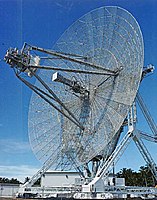
Photo from wikipedia
Seizure detection devices can improve epilepsy care, but wearables are not always tolerated. We previously demonstrated good performance of a real‐time video‐based algorithm for detection of nocturnal convulsive seizures in… Click to show full abstract
Seizure detection devices can improve epilepsy care, but wearables are not always tolerated. We previously demonstrated good performance of a real‐time video‐based algorithm for detection of nocturnal convulsive seizures in adults with learning disabilities. The algorithm calculates the relative frequency content based on the group velocity reconstruction from video‐sequence optical flow. We aim to validate the video algorithm on nocturnal motor seizures in a pediatric population. We retrospectively analyzed the algorithm performance on a database including 1661 full recorded nights of 22 children (age = 3‐17 years) with refractory epilepsy at home or in a residential care setting. The algorithm detected 118 of 125 convulsions (median sensitivity per participant = 100%, overall sensitivity = 94%, 95% confidence interval = 61%‐100%) and identified all 135 hyperkinetic seizures. Most children had no false alarms; 81 false alarms occurred in six children (median false alarm rate [FAR] per participant per night = 0 [range = 0‐0.47], overall FAR = 0.05 per night). Most false alarms (62%) were behavior‐related (eg, awake and playing in bed). Our noncontact detection algorithm reliably detects nocturnal epileptic events with only a limited number of false alarms and is suitable for real‐time use.
Journal Title: Epilepsia
Year Published: 2020
Link to full text (if available)
Share on Social Media: Sign Up to like & get
recommendations!